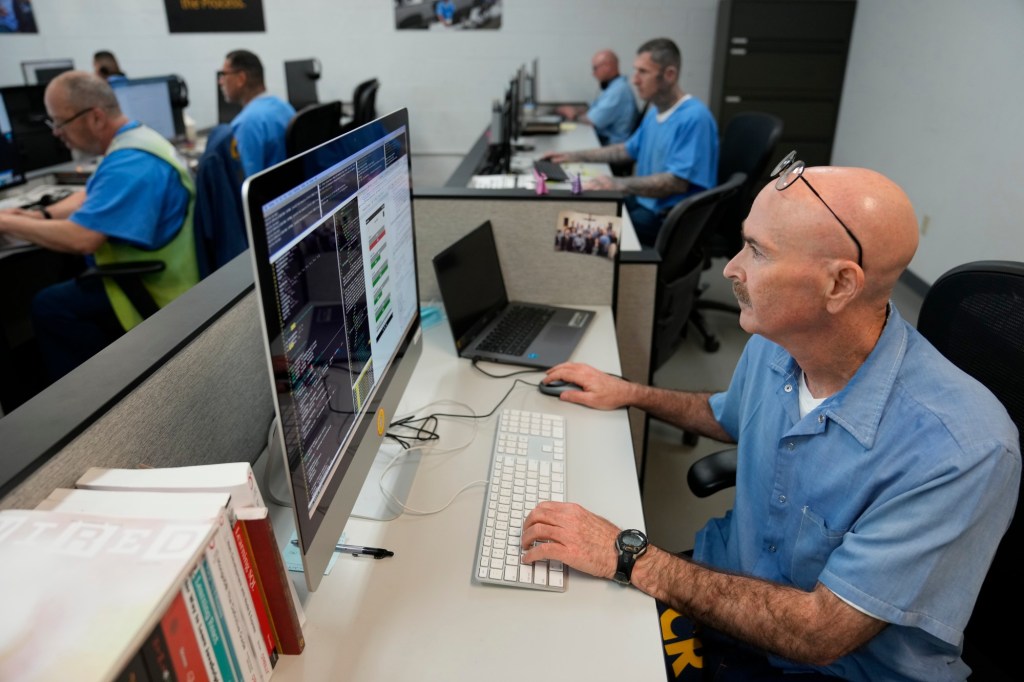
SACRAMENTO—Maybe it’s just a sign of our angry and divided times, but I’m finding that critics often don’t read past the headline or the first couple of paragraphs before sending me a nasty-gram. So, in the interest of reading comprehension, I will start this unlikely-to-be popular column with some caveats.
I believe dangerous predators should spend their lives behind bars. I do not believe incarceration should be a picnic. Although there are some people in our state’s prison system who shouldn’t be there, I’m convinced that the vast majority of them do belong there. I do not think criminals are victims of society.
I also cringe at many California Democrats’ refusal to take seriously public-safety concerns. I think punishment—and not just rehabilitation—is a proper role for the justice system. I also believe protecting innocents is more important than giving people a second chance. The main goal of justice reform should be to assure that any punishment fits the crime, not to make it harder to incarcerate murderers. I even voted for Proposition 36, the anti-crime measure Californians passed in November.
Yet, unlike some of my conservative-minded friends, I am encouraged rather than appalled by the Newsom administration’s $239-million plan to remake the notorious San Quentin State Prison in Marin County “into a Scandinavian-style rehabilitation center complete with a farmer’s market, a podcast production studio and a self-service grocery store,” per the San Francisco Chronicle. The podcast idea sounds dopey, but the rest of it isn’t.
The hulking facility overlooking San Francisco Bay in Marin County is the oldest correctional facility in California, dating to the 1850s. It already has been renamed the San Quentin Rehabilitation Center. By the way, the state’s prison agency is called the California Department of Corrections and Rehabilitation, not that “corrections” and “rehabilitation” have been particularly successful here—or in any of our high-security state or federal prisons.
Before you start typing, consider this comment from California Correctional Peace Officers Association Vice President Steve “Bull” Durham after he and fellow guards’ union members toured a facility in Norway: “Corrections officers in California are literally sick and tired from being cogs in a machine that doesn’t work—for our society, for incarcerated persons, or for guards who want a career that doesn’t kill them.” CCPOA isn’t comprised of head-in-the-clouds progressive dreamers.
Let’s start with a look at what this model entails. Instead of having cellblocks that resemble scenes from “The Green Mile,” Scandinavian-style prisons look more like low-grade community colleges. The emphasis is on preparing prisoners for re-entry into society by teaching them how to function as responsible adults rather than spending years joining gangs, fighting and just trying to survive the harsh conditions. These prisons view the deprivation of freedom rather than harrowing conditions as the real punishment.
Evaluating the success of these prison experiments is tough given that Scandinavian societies are far less violent than American ones. They are more homogenous. They have far lower incarceration rates and people in Finland, Norway and Sweden tend to be better behaved in general.
Yet this model also has been tried in the United States, most prominently in the tough-as-nails prison in Chester, Pa., just south of Philadelphia. As Vital City reports, “the rates of serious, adjudicated misconduct are meaningfully lower when the unit is compared to other general population housing units at the facility. Conflict and violence are also exceedingly rare.” Recidivism rates appear to be dropping.
The latest data shows California recidivism rates falling somewhat to 42%, as prisons have had less overcrowding and state officials have focused more on rehab programs. Research shows that prisoners who participate in re-entry programs have a 13% lower rate of recidivism than others, per CDCR data reported by CalMatters. Consider the San Quentin proposal as a prison-wide re-entry program.
The state also pays significantly less to house inmates in rehabilitation-oriented settings than the traditional, heavily guarded ones. So while the cost of the San Quentin conversion seems eye-popping, it probably makes financial sense. I’m not naïve. Often, new government programs promise myriad cost savings that never materialize.
It’s imperative that the state seriously look at the costs v. benefits, but potential savings seem real given the potential for a more chill prison scenario. I’ve toured traditional jails and ones run like this new model. The latter have fewer violent incidents, are the subject of fewer lawsuits and are safer and more humane for everyone involved (prisoners and staff).
Now consider this statistic: The U.S. Department of Justice reports that around 95% of all prisoners will at some point be released from prison. If someone from San Quentin moved into your neighborhood, would you want that person to have spent the past 10 years fighting for his life as part of a skinhead gang or someone who had spent the time attending classes, gardening and playing ping pong?
Steven Greenhut is Western region director for the R Street Institute and a member of the Southern California News Group editorial board. Write to him at sgreenhut@rstreet.org.
Originally Published:



